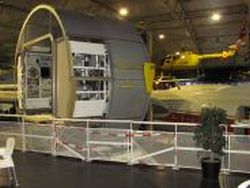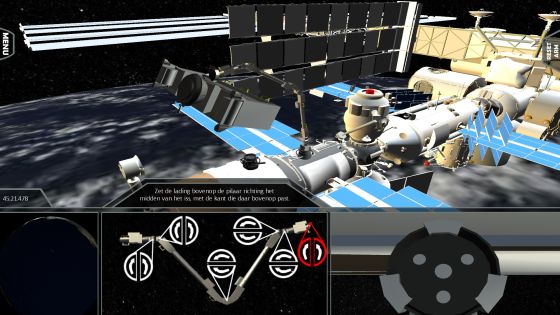
Experience the extraterrestrial life of astronauts up close and personal in the Colombus laboratory
Visitors can now experience the extraterrestrial life of astronauts up close and personal in the Colombus laboratory at the National Aerospace Museum (NRM).
This large-scale model of the Colombus laboratory was recently added to the NRM exposition in the Aviodrome (Lelystad). The Colombus laboratory is a European module that is part of the International Space Station (ISS). The exposition model gives visitors a realistic view of the space in which astronaut, André Kuipers, will conduct research from December 2011 to May 2012.
The Colombus model consists of numerous research facilities that serve as ‘real’ prototypes for the current research facilities on board the ISS. The National Aerospace Laboratory (NLR), as part of a joint project with ESA and NIVR, supplied ESA with one of the workbenches, which for years has been used as part of the Crew Work Station Testbed, for conducting research about how to design and develop research facilities for astronauts on board the ISS.
One special element in Colombus is the Space Robot Game (EXTERRA: Experimental Test with the European Space Robot Arm), which was developed by two NLR interns. The game is based on the European Robot Arm (ERA), an 11-meter long robotic arm that conducts independent or remote controlled activities outside the space station. ERA was principally developed in the Netherlands by Dutch Space, with NLR making a significant contribution in the form of the MPTE ground station. The Space Robot Game gives young visitors a unique opportunity to experience controlling the ERA, while doing so as part of a fun, interactive game.
NLR provided most of the support for the construction and set up of Colombus. In addition to financial contributions, NLR also contributed in other areas, such as repairing the workbenches and rendering the facility accessible to visitors.
The Columbus model was made available by the ESA Erasmus Centre of the Human Spaceflight and Operations (HSO) directorate.

EXTERRA – Space Robot Game is interactive and gives visitors the opportunity to experience the control of the European Robotic Arm (ERA).

